Jennifer Bohnhoff's Blog, page 47
December 2, 2014
Saving the Children
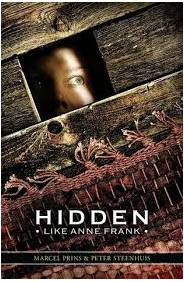 Thanks to The Diary of Anne Frank, which is taught in middle and high schools throughout the United States, just about everyone knows that Jewish children in the Netherlands were hidden away from the Nazis during World War II.
Thanks to The Diary of Anne Frank, which is taught in middle and high schools throughout the United States, just about everyone knows that Jewish children in the Netherlands were hidden away from the Nazis during World War II.Hidden Like Anne Frank make it evident that hiding children away was more common than some of us might have imagined. This book, by Netherlanders Marcel Prinz and Peter Henk and translated into English by Laura Watkinson, allows 14 people to pass on their experiences as Jewish children in the Netherlands during World War II. Now adults, each narrator recounts being moved from house to house and city to city. Some were kept by family members and relatives. Others, by complete strangers. They endured boredom and terror, hunger and cramped quarters. Some were just three or four years old. Others were teenagers. But they survived because of a secret network of brave people who were determined to protect them.
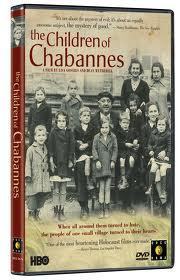 Less well known or understood by Americans is the story of Jewish children in France. One of the reasons for this was that the situation in France was much more complex than in the Netherlands.
Less well known or understood by Americans is the story of Jewish children in France. One of the reasons for this was that the situation in France was much more complex than in the Netherlands. France was a divided nation during World War II. After France surrendered to Germans on June 24, 1940, three fifths of France, including Northern France and the entire French Atlantic Coast, was occupied by the German army.
Henri Philippe Pétain, a World War I General who had become a national hero, helped form a goverment commonly known as Vichy France in the remaining two fifths of French territory which was called the Southern Zone.
The senior leaders of the Vichy goverment, in the hopes of preserving a modicum of French sovereignty, turned a blind eye to the plunder of French resources and the sending of French forced labor to Nazi Germany. They also allowed and sometimes aided anti-semite parties in the concentration and persecution of Jews, particularly those of foreign citizenship. Vichy France sent 76,000 Jews to death camps. 11,000 of them were children.
Not all Frenchmen agreed with the anti-semite policies of the Vichy regime or their Nazi allies. The Children of Chabannes tells the story of Felix Chevrier, who housed Jewish children, many of them German or Polish by birth, in Chateau Chabannes, his school in Chabannes, Creuse. In a series of interviews, these children, now adults, speak about how Chevrier integrated them into classes with the local children. They believe that the rigorous athletic programs he developed were intended to strengthen them for the physical and mental hardships that they would face if ever sent to Drancy, the closest Jewish Concentration Camp, or to Germany.
When the Germans occupied the Southern Zone in November 1942, the Chateau began dispersing children to protect them from round-up. When the round-ups came, Chevrier was able to stall and obfuscate records. His deceit and planning saved the lives of hundreds of children.
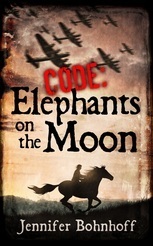 My novel, Code: Elephants on the Moon, takes place in Normandy during World War II. Normandy was part of Occupied France. As such, then Germans had the ability to round up all Jews, even those who were French citizens.
My novel, Code: Elephants on the Moon, takes place in Normandy during World War II. Normandy was part of Occupied France. As such, then Germans had the ability to round up all Jews, even those who were French citizens.As in the Netherlands and elsewhere, not everyone agreed with this policy. Many Frenchmen, including the fictional ones in my novel, hid their Jewish neighbors or helped them establish false identities or helped smuggle them out of the country. It is estimated that three-quarters of France's Jewish population survived the war because of the efforts of others.
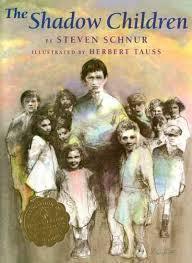 However, just as not all stories of children hidden in the Netherlands end happily (Anne Frank's, for instance), not all French stories conclude with hundreds of children saved by brave and defiant action.
However, just as not all stories of children hidden in the Netherlands end happily (Anne Frank's, for instance), not all French stories conclude with hundreds of children saved by brave and defiant action.Steven Schnur's The Shadow Children tells the fictional story of Etienne, an eleven year old boy who visits his grandfather during post WWII in the French village of Mount Brulant.
When Etienne sees the ghosts of hundreds of starving, emaciated, raggedy, forlorn children hiding in the woods, he asks his grandfather and other adults about them. Eventually he learns the sad, tragic, terrible truth: Jewish children who were sent into the country to seek refuge arrived in Mount Brulant, where the people helped them for a time. Yet, when the Nazis hunted the children down, the townspeople allowed the Nazis to herd them into trains and ship them to concentration camps.
The true focus of the story in neither Etienne nor the children, but the grief and guilt of the townspeople, who buckled under the threats of the the Nazis. While this story may be fiction, many Frenchmen feel grief and guilt when recounting this dark period in their history.
Published on December 02, 2014 09:12
November 20, 2014
Judging a Book by its cover: Part Two
L.M. Elliott's Under a War-Torn Sky is one of my favorite novels. It is a fast-paced read that really excites middle school boys who are otherwise reluctant readers. I used it several times when I was a reading intervention teacher, both as a class read and as an individual recommendation, and I've never had a boy not enjoy it. 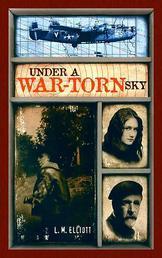 The story is about Henry Forester, a young man flying a B-24 in World War II. When his plane is shot down and he is trapped behind enemy lines, kind French citizens, some who are members of the Resistance and some who are just sympathetic to a frightened young man, help him to escape and return home via Switzerland and a treacherous route over the Pyrennes.
The story is about Henry Forester, a young man flying a B-24 in World War II. When his plane is shot down and he is trapped behind enemy lines, kind French citizens, some who are members of the Resistance and some who are just sympathetic to a frightened young man, help him to escape and return home via Switzerland and a treacherous route over the Pyrennes.
As one might expect, there are several plot elements in common between Under a War-Torn Sky and Code: Elephants on the Moon. My French girl, Eponine, has a very different life from the French girl who helps Elliott's Henry, but the both share some of the same opinions about the callow young aviators they help rescue.
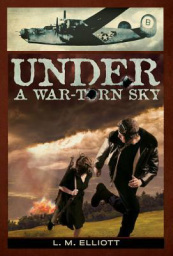 Some of the questions I was asked when it came time for me to commision the cover for Code: Elephants on the Moon was if there were any other books whose subject or theme were like mine. Could I suggest any covers that looked like what I wanted my own cover to look like?
Some of the questions I was asked when it came time for me to commision the cover for Code: Elephants on the Moon was if there were any other books whose subject or theme were like mine. Could I suggest any covers that looked like what I wanted my own cover to look like?
I immediately thought of Under a War-Torn Sky. I googled it to find cover images and was surprised to find not just the one I was familiar with, but three covers.
I
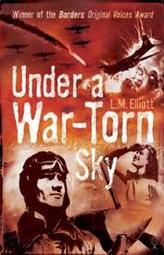 I sent all three of these images to the artist who created my cover. As you can tell, mine came out very different than any of these. This isn't surprising, since the focus of the two books is different. My aviator plays just a small part in my plot, while he is the main character in Elliott's.
I sent all three of these images to the artist who created my cover. As you can tell, mine came out very different than any of these. This isn't surprising, since the focus of the two books is different. My aviator plays just a small part in my plot, while he is the main character in Elliott's.
I'm curious: which of these covers attracts your attention? Based on the very sketchy synopsis I've given you, which one best expresses the story? Would you buy any of these three books?
Knowing how you think might influence me when it's time to commission my next cover! Tell me what you think about these covers Which of these three covers would you be most likely to pick up in a bookstore? * The top one The middle one The bottom one None of them attract my attention Which of these covers best tells the story? * The top one The middle one The bottom one Does this sound like a book you would buy? * Yes! I love war stories. Only if I knew a boy who might read it. Nope. Not interested. Anything else you want to tell me about these covers? * Submit
 The story is about Henry Forester, a young man flying a B-24 in World War II. When his plane is shot down and he is trapped behind enemy lines, kind French citizens, some who are members of the Resistance and some who are just sympathetic to a frightened young man, help him to escape and return home via Switzerland and a treacherous route over the Pyrennes.
The story is about Henry Forester, a young man flying a B-24 in World War II. When his plane is shot down and he is trapped behind enemy lines, kind French citizens, some who are members of the Resistance and some who are just sympathetic to a frightened young man, help him to escape and return home via Switzerland and a treacherous route over the Pyrennes.As one might expect, there are several plot elements in common between Under a War-Torn Sky and Code: Elephants on the Moon. My French girl, Eponine, has a very different life from the French girl who helps Elliott's Henry, but the both share some of the same opinions about the callow young aviators they help rescue.
 Some of the questions I was asked when it came time for me to commision the cover for Code: Elephants on the Moon was if there were any other books whose subject or theme were like mine. Could I suggest any covers that looked like what I wanted my own cover to look like?
Some of the questions I was asked when it came time for me to commision the cover for Code: Elephants on the Moon was if there were any other books whose subject or theme were like mine. Could I suggest any covers that looked like what I wanted my own cover to look like?I immediately thought of Under a War-Torn Sky. I googled it to find cover images and was surprised to find not just the one I was familiar with, but three covers.
I
 I sent all three of these images to the artist who created my cover. As you can tell, mine came out very different than any of these. This isn't surprising, since the focus of the two books is different. My aviator plays just a small part in my plot, while he is the main character in Elliott's.
I sent all three of these images to the artist who created my cover. As you can tell, mine came out very different than any of these. This isn't surprising, since the focus of the two books is different. My aviator plays just a small part in my plot, while he is the main character in Elliott's.I'm curious: which of these covers attracts your attention? Based on the very sketchy synopsis I've given you, which one best expresses the story? Would you buy any of these three books?
Knowing how you think might influence me when it's time to commission my next cover! Tell me what you think about these covers Which of these three covers would you be most likely to pick up in a bookstore? * The top one The middle one The bottom one None of them attract my attention Which of these covers best tells the story? * The top one The middle one The bottom one Does this sound like a book you would buy? * Yes! I love war stories. Only if I knew a boy who might read it. Nope. Not interested. Anything else you want to tell me about these covers? * Submit
Published on November 20, 2014 20:02
November 9, 2014
Excuse me While I nano
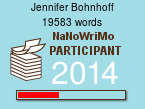 It's November. For some of us crazy writers, that means we are deep in over our heads in an event called NaNoWriMo.
It's November. For some of us crazy writers, that means we are deep in over our heads in an event called NaNoWriMo.For those of you who don't know about such craziness, NaNoWriMo is short for National Novel Writing Month, which just happens to be November. Every year, thousands of writers complete the challenge of completing a novel in a month's time.
For NaNo's purposes, a novel is 50,000 words. They don't have to be good words, or parts of good sentences; any set of 50,000 words will do.
This year, I am gaming the system a bit. Instead of writing a novel, I am finishing one and beginning another.
The novel I'm finishing (or, to be more precise, FINISHED yesterday!!!) is Swan Song, a big concept YA that I've been working on, intermittently and fitfully, for the better part of a decade. The novel begins with some questions: What if Beowulf is not really about some 5th century Germanic warlord? What if it's really a much older story, a true story, that was adapted for each new generation of listeners? Who, then, would Grendle the monster be? Swan Song conjectures on those questions in two intertwined stories: one set in a present day high school and another set 29 thousand years ago. Both are stories of exclusion and prejudice and parallel each other.
Now that I'm finished with Swan Song, I'll begin working on Summer of the Bombers, a contemporary midgrade novel set in New Mexico. The bombers in question are the ones the Forest Service use to fight wildfires here in the parched Southwest, and the story is about what happens to a family when a fire disrupts its life and destroys its home.
Even with two different stories to work on, piling up 50,000 words can be a pretty daunting task. What happens if the muse doesn't move me along - if I run out of words before I run out of month? If that happens, I guess my main character will start spouting my grocery lists and middle school social studies lesson plans. She'll recite my Facebook posts and, if I'm really desperate, my Twitter posts. She might even be credited with the words from my blog. After all, there are 393 perfectly good words here, and I might need NaNo credit for each and every one of them.
Published on November 09, 2014 13:30
October 13, 2014
Resurrecting Ghosts
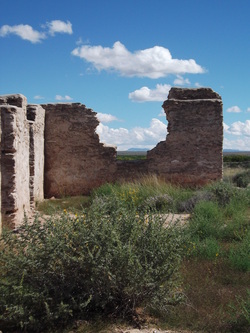 Last week a teaching colleage and I visited several places of historical interest in New Mexico. Among them were Fort Craig, outside of which a Civil War battle happened, and Fort Selden, a fort used during the Indian Wars.
Last week a teaching colleage and I visited several places of historical interest in New Mexico. Among them were Fort Craig, outside of which a Civil War battle happened, and Fort Selden, a fort used during the Indian Wars. Time and disuse had ravaged both places, reducing them to fragments of shattered walls and long, low mounds that had once been ramparts. The adobe walls had melted back into the desert soils from which they had been formed.
We visited the one on a Thursday and the other on a Friday, and each time we had the run of the place to ourselves. The only sounds were the whistling of the wind over the broken stones, the chirp of crickets and the crunch of gravel beneath our feet. It was hard to believe that both sites had once bustled with life.
But it had been. I know this because I'd just recently finished reading Hampton Sides' Blood and Thunder, a biography of Kit Carson. One chapter told about Carson's time at Fort Craig, when he was serving as a Colonel in the First New Mexico Volunteer Infantry Regiment during the Civil War. Carson led his men against Confederate troops in the Battle of Valverde, which was fought just north of the fort. Sides includes in his narrative the tramp of drilling men, the neighing of horses, the cacaphony of parade bands, the thunder of artillery and the crackle of small arms. Mr. Sides breathed life into the scene. He made the Old West come alive again in my imagination.
As I stood among the dry and silent ruins, I remembered Sides' vivid descriptions. I considered how the parade grounds would have looked when the marching boots of seventeen companies of men kept the weeds at bay, how the air would have smelled when filled with the tang of horse dung and kitchen smoke and gunpowder.
Good history and good historical ficiton can breath life into events long past. It can resurrect people long dead and places that have mouIdered into dust. It can make that which has faded away become vivid again.
I don't know how much will be left of the old western forts in another decade or two. Perhaps there will be nothing for my grandchildren to see when they are old enough to care about what happened in New Mexico in the nineteenth century. But my hope is that those who follow will be able to resurrect the forts and the people who occupied them through the power of the written word.
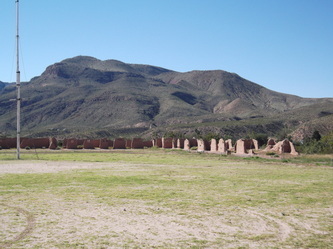
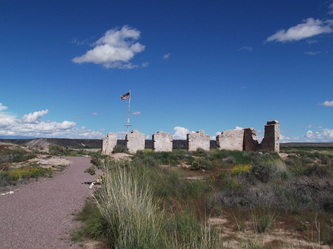
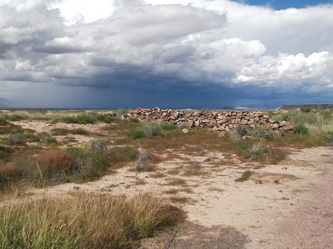
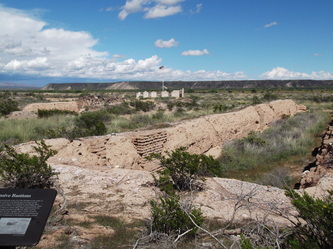
Published on October 13, 2014 20:27
September 28, 2014
My Civil War Connection
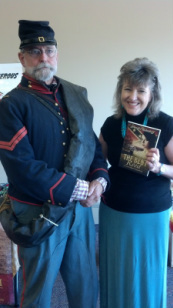 Yesterday I gave a presentation at the Fall Conference of the New Mexico Council of Social Studies. The theme of the conference was The Civil War in New Mexico, and my talk was on how to help students with limited English or low reading skills understand what they were reading about.
Yesterday I gave a presentation at the Fall Conference of the New Mexico Council of Social Studies. The theme of the conference was The Civil War in New Mexico, and my talk was on how to help students with limited English or low reading skills understand what they were reading about.I began my talk with a story about something that had happened in my class a couple of weeks ago. One of my students had brought in some money and wanted to buy my Civil War novel, The Bent Reed. When I signed a copy for her and set it on her desk, the student sitting next to her looked over at it.
"What's this?" he asked.
"It's a book," I said, stating the obvious. He studied the bookcover a little longer, then pointed to my name.
"Did you write it?" he asked. When I told him yes, he looked at the cover some more before asking what the book was about. I told him the Civil War and his gaze shot up to my face.
"Were you there?" he asked with a surprised gasp.
So I have an admission for any of my fans that I've led astray; I was not an eyewitness at the Battle of Gettysburg. I am not, like I claimed yesterday, a two hundred year old Social Studies teacher.
But even though I wasn't there, I do have a Civil War connection.
The man in the picture is not it. He is Ken Dusenberry, a Corporal in the Artillery Company of New Mexico and a very interesting man to talk with. Ken knows a lot about the life and times of the Civil War soldier and can tell you more about ammunition and "grub" than just about anyone alive. But much as he would like to have been around at the time of the Civil War, he was not.
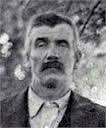 My Civil War connection is my great grandfather, Selwin Clark Linnell. Born on May 6, 1848 in Rockford, Illinois, Selwin enlisted as a private in Company K of the 132nd Illinois Volunteer Infantry one month before his 16th birthday. According to the geneology site on which I found this information, he served for 100 days in the campaign of General Sherman, and then was honorably discharged. I have a framed copy of his discharge papers hanging in my house. The family lore has always been that he was a drummer boy, which is very possible considering his age. This picture is obviously from many years later, and it's not the best picture I've seen of him. He must have been a strong and healthy man; he was 65 when my grandmother was born.
My Civil War connection is my great grandfather, Selwin Clark Linnell. Born on May 6, 1848 in Rockford, Illinois, Selwin enlisted as a private in Company K of the 132nd Illinois Volunteer Infantry one month before his 16th birthday. According to the geneology site on which I found this information, he served for 100 days in the campaign of General Sherman, and then was honorably discharged. I have a framed copy of his discharge papers hanging in my house. The family lore has always been that he was a drummer boy, which is very possible considering his age. This picture is obviously from many years later, and it's not the best picture I've seen of him. He must have been a strong and healthy man; he was 65 when my grandmother was born.I know nothing more about Linnell's Civil War service, but I plan to do some research and find out if he might have seen some action during his hundred days. Who knows? That research just might lead to another story.
Published on September 28, 2014 18:48
September 11, 2014
Remembering
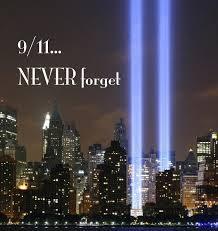 Today we remember the four terrorist attacks that were launched on America by the terrorist group al-Qaeda thirteen years ago.
Today we remember the four terrorist attacks that were launched on America by the terrorist group al-Qaeda thirteen years ago.Or we don't.
The 2001 attacks on New York City and Washington D.C. killed almost 3,000 people and left millions with long term respiratory and immune system problems. It caused at least $10 billion in property and infrastructure damage and disrupted business and travel for weeks. And it changed the American psyche, as we realized that we, too, were vulnerable to the violence and mayhem that has characterized the Middle East for a long time.
The American people vowed that we would never forget. We taught about 9/11 in our classrooms. We observed moments of silence and produced special inserts in the papers, programs on TV, movies and books. We constructed memorials, including the National September 11 Memorial and Museum in New York, the Pentagon Memorial in Washington, and the Flight 93 National Memorial in Shanksville, Pennsylvania.
But for many, the events of 9/11 faded into the past. Our own personal lives, filled with tiny triumphs and defeats took precedence.
It is not surprising that the significance of 9/11 has faded for many people in our nation. This, after all, is not the first event that we vowed to never forget.
Remember Pearl Harbor? Remember the Maine? Few of my students could tell you anything about either of these unforgettable events.
This is one compelling reason for reading historical fiction. Historical fiction reminds us of who we once were and what we went through in our past. It personalizes bygone eras so that we can enter into them and see them through fresh eyes. Through these eyes we remember not only the huge events of history, but the tiny triumphs and defeats of other, long ago personal lives. We realize that we are a part of that long, hopeful line that stretches back through countless generations, each with a story to tell.
And we remember.
Published on September 11, 2014 05:32
September 9, 2014
Parrott: the Gun Maker who Saved the Union
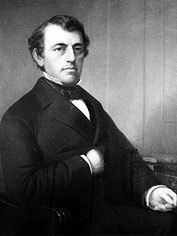 Robert Parker Parrott was a member of the West Point class of 1824 and joined the artillery after graduating. One of his assignments, as inspector of ordnance at the newly founded West Point Foundry in Cold Springs, New York, led him to leave the Army and become the Foundry's Superintendant.
Robert Parker Parrott was a member of the West Point class of 1824 and joined the artillery after graduating. One of his assignments, as inspector of ordnance at the newly founded West Point Foundry in Cold Springs, New York, led him to leave the Army and become the Foundry's Superintendant.Leaving the Army to work for private company allowed Parrott the freedom to experiment with gun design without the red tape that government work, was known for even then. Parrott began playing around with artillery design, eventually leading to the development of the first rifled cannon. (For the September 1861 Scientific American article announcing his discoveries, click here.)
The word rifling means carving a spiral into the inside of a tube. Rifling a cannon made the projectile shot from it spin as it left the barrel. As anyone who has ever thrown a football will know, putting a spin on a projectile allows for greater directional accuracy of the projectile. The greater the accuracy, the more deadly the cannon barrage; in theory, at least, rifling allowed artillerymen to pinpoint their targets instead of just firing in the general direction and hoping for the best.
Rifling the cannon led to a secondary problem, however. In order for the rifling to be effective, whatever was fired from the cannon had to fit tightly. At the time of the Civil War, most artillery pieces were still loaded from the front end, the muzzle end. That meant that whatever was fired had to go in the same way it came out, and that whatever went in had to be slowly and painstakingly corkscrewed down the rifle grooves before it could be fired back out. Parrott solved this problem by developing a new type of shell for his muzzle-loading rifled cannon. This new shell had a ring of brass, a softer metal, at its base. When fired, the brass expanded to fit the rifling. This sped up the time it took to load and fire cannon.
Greater accuracy and speed is a deadly combination in artillery, and Parrott offered this combination to the Union land and naval forces at cost. This source inexpensive and superior weaponry was a serious advantage for the North in the Civil War.
Published on September 09, 2014 10:52
September 4, 2014
Belying the Bells and Whistles
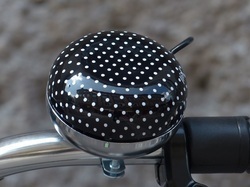 Everyone wants all the bells and whistles. We want the latest and greatest and most state-of-the-art thingy available, and we want it as soon as it's available.
Everyone wants all the bells and whistles. We want the latest and greatest and most state-of-the-art thingy available, and we want it as soon as it's available.This yearning for the new is very apparent in my students. I teach middle school. Very few of my students have no cell phone. Most not only have a cell phone, but they have a state-of-the-art model. They are proud to show you that theirs is the latest and the greatest. It has all the bells and whistles.
This isn't always to their advantage. For many, their phones are more of a distraction than an aide to their education. I've often been asked if they could use an ap to look up word definitions or spellings, only to find my students distracted by games or texts from their friends.
Last week in my advisory class we talked about good academic habits. Among those habits was treating one's body well: eating good food, getting enough exercise, and getting enough sleep. When I mentioned that one way to ensure a good night's sleep is to turn off one's cell phones, a number of my students errupted into protests. How could they be expected to turn their phones off? Their phones were their alarm clocks! I suggested they might turn them to 'alarm only.'
"I can't do that," one girl said, despair dripping from her voice. "I might miss something."
And so I've come to realize that many of my students are not getting enough sleep at night because they are afraid of missing something, afraid of missing the next big thing. They have becomes slaves to their bells and whistles.
When I published my first novel, I published it as an ebook. Even though I'd never read an ebook and didn't own a kindle or a nook, I'd read plenty of experts who said that ebooks were the next big thing, the state-of-the-art, bell and whistle way to read. Ebooks were going to revolutionize the way books were marketed and the way books were read. If this was the wave of the future, I wanted to catch it.
One of the big arguments for technology was that it would make information more accessible for more people. E-readers would make even remote villages in third world countries would have access to huge stores of information. Specialized software was going to make the written word accessible to people with handicaps that made reading impossible. The promises were exciting indeed.
But the wave of the future hasn't been the Banzai pipeline to fame and fortune that I was given to believe. While I've had some success with ebooks, I've had much more luck with my paperback editions. Many of my readers tell me they like the feel of real paper in their hands. They like the smell of it. The heft of it. They like turning the page. Somehow, in spite all the expert opinions, the tried and true has won out over the state-of-the-art.
So maybe the latest and the greatest has some value. Perhaps from those bells and whistles we will develop new ways of reading that will help those who cannot read right now. We will develop audio books and books that scan and scale to help those with disabilities. We will be able to distribute more books to people who live hundreds of miles from libraries, and put whole libraries into the hands of those who've never owned even one book.
Let us make sure that we control those bells and whistles instead of letting them control us.
Published on September 04, 2014 05:58
September 2, 2014
Clafoutis
Earlier this summer I'd sent out a recipe for clafoutis to the friends, family and friends who are on my email list. But it's time to celebrate some more now that Code: Elephants on the Moon is available in paperback as well as ebook! So enjoy
Published on September 02, 2014 19:27
August 17, 2014
Running with Old Glory
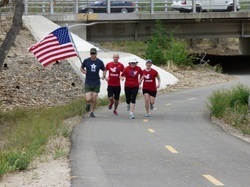 Not everyone loves America. I was reminded of this fact just yesterday while out for my weekly run with Team RWB.
Not everyone loves America. I was reminded of this fact just yesterday while out for my weekly run with Team RWB.Team RWB is an organization that uses exercise and social interaction to help veterans reintegrate into civilian life. I've been a volunteer with this group for the past several years, and during that time I've devoted most Saturday mornings to biking, hiking or running with veterans. (I'm the chunky old one in the picture. Don't tell anyone, but being with Team RWB allows this fat old lady to hang out with some incredibly fit and beautiful young people, so it's of immense benefit to me.)
Yesterday, as we do many Saturdays, we were running along the bosque trail. And, as usual, we were wearing our red shirts and carrying Old Glory. Many people we pass salute, or call out some encouragement. But yesterday, one woman passed us and offered us a single-finger salute. Half an hour or so later she passed us going the other direction and her companion cursed us. It was very upsetting to all of us, especially the corpsman who really wanted to hunt these two women down and have a little talk with them. Disrespecting us is one thing. Disrespecting the flag he's fought for is quite another.
I am pretty sure the two women were not US citizens. Because of its altitude, dry air and temperate climate, Albuquerque is a hub for the international running community. I encounter the Japanese women's marathon team almost every time I do an early morning run up on Tramway Boulevard. I frequently get passed by Kenyans up on the foothills trails. These two women were definitely elite runners: long and lean and very, very fast. They were dark skinned, but didn't look Kenyan. I am guessing they were from Northern Africa somewhere. I am also guessing that, while they are willing to come to America to train, their perception of the U.S. and its military is less than positive, and I am sad about that.
It saddens me to think that Americans are thought of as bullies or greedy imperialists. Even here in America, some people argue that the United States engages in war for purely selfish reasons. We've all heard it: ideas like the only reason the U.S. went into Iraq was to keep the price of oil low, or that we are intent on forcing the world into our own mold and we will use as much force as necessary to attain that goal. And while I won't deny that our government makes policies in our own best interest, (what country doesn't?) I do think such accusations ignore the immense amount of money and effort America expends to alieviate suffering and hardship in the world. As in Haiti and the Philippines, we are often among the first into areas devastated by natural disaster. We are by nature a generous people, and we don't like to see people hurting.
SPOILER ALERT! IF YOU HAVEN'T READ CODE: ELEPHANTS ON THE MOON YET YOU MIGHT WANT TO STOP HERE TO AVOID LEARNING SOMETHING CRUCIAL TO THE PLOT.
But not all disasters are natural in nature, and Americans have been known to want to help out in political and human-caused disasters as well. When the United States was slow to enter into the fight against Hitler in World War II, my favorite High School teacher went to Canada and joined the Royal Canadian Army. He was one of the inspirations for the fictitious Seamus Maloney who, like many real Americans, did the same in World War I, and then again in the Spanish Civil War. (He was also the person who gave me a copy of T.S. Elliot's The Waste Land and encouraged me to keep writing.) None of the American servicemen or women I've spoken to who were in Iraq say they went there to protect their gasoline tank. Many tell me they went because Saddam Hussein was mistreating the minorities within his borders or, since Hussein's demise, to protect one Iraqi group from another.
There are many who would argue with me, but I continue to believe that the American spirit is one of generosity and goodness. We despise bullies and human suffering and will do everything within our power to suppress the one and alleviate the other. And if that means we must enter the fight, we will do so, not because of what we will get out of it ourselves, but because we believe it is the right thing to do.
And so, in spite of middle finger salutes, I will continue to run with service members and with Old Glory. And I will run proud.
Published on August 17, 2014 14:26



